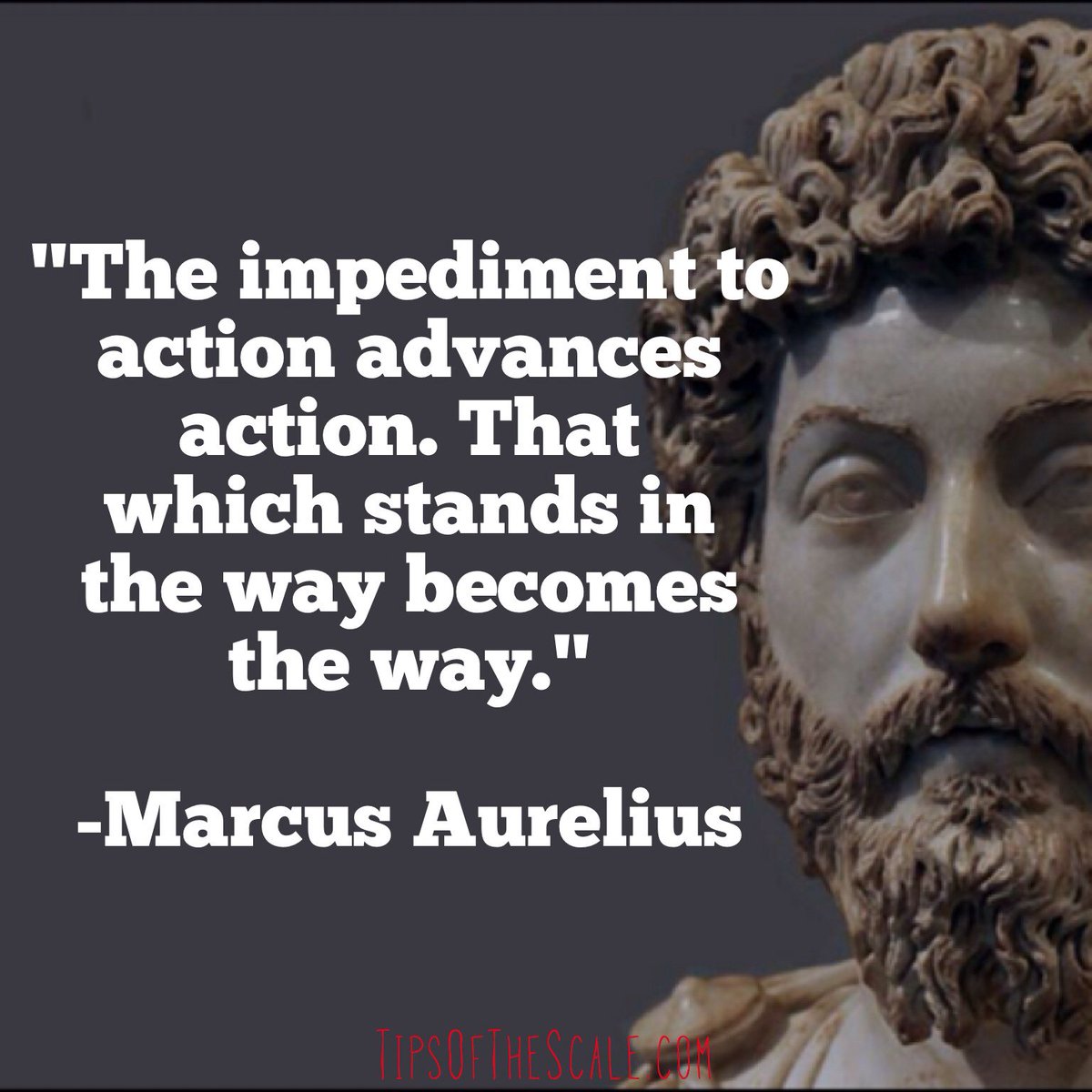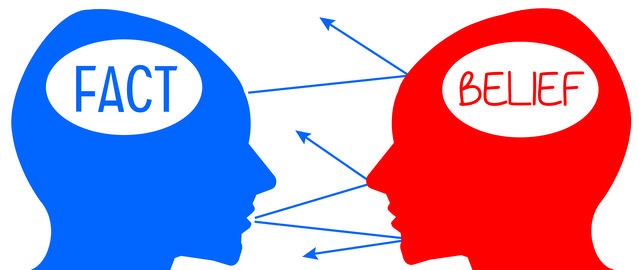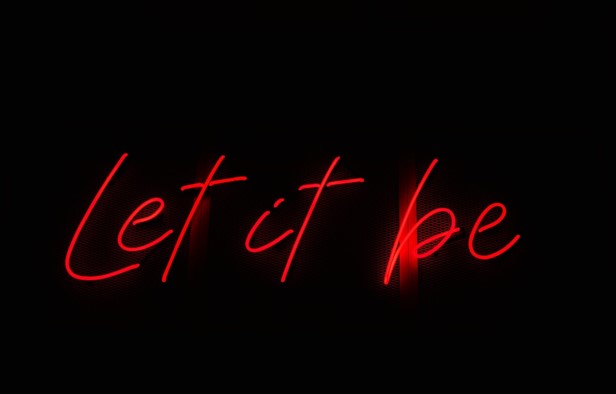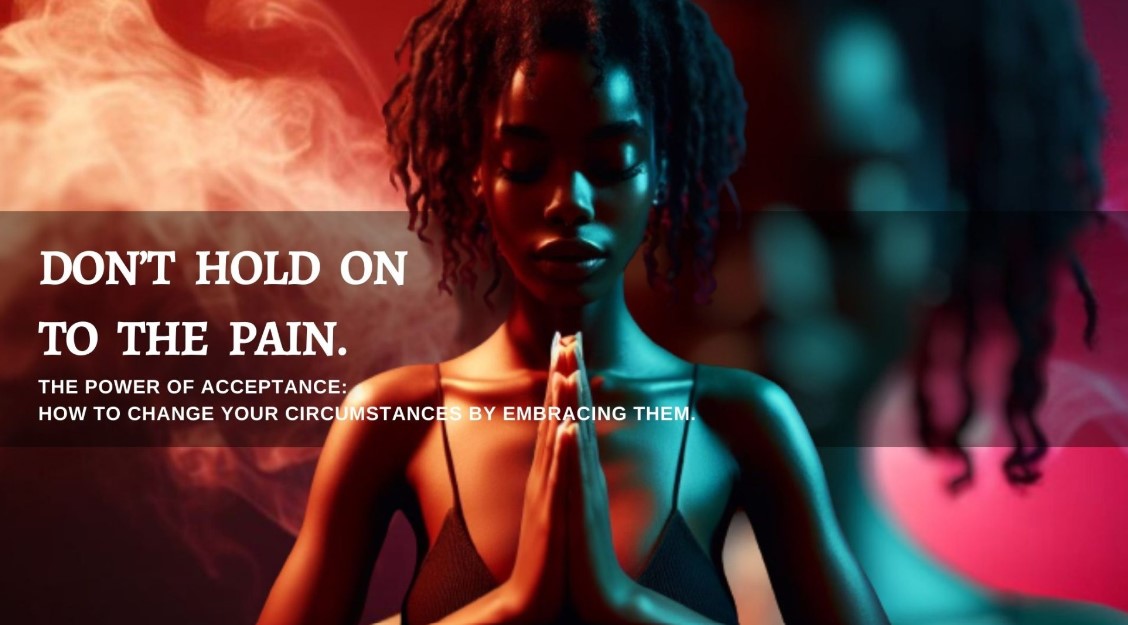Dealing With Setbacks
5 Questions To Help You Face Discomfort

Dealing with setbacks is not something that comes naturally to most of us.
We all struggle and strive to attain health, wealth and personal happiness. Yet these are the three big areas where - sooner or later - we all get severely tested...
- The job that you thought you were going to get, and that you wanted so much, went to someone else.
- The business deal you were about to complete, and that means so much to your future and financial security, has failed for reasons beyond your control.
- The promised financial support for your sick child has not come through.
- Your partner has just told you that they want to end your relationship.
- Recent medical tests have just confirmed that you have cancer.
If you are experiencing any of these things and having a really tough time right now, I feel for you in these hard times.
The purpose of this article is help you to take a step back from whatever it is you are struggling with right now, and to gain some insight and practical resources for dealing with setbacks and to help you step off this ferris wheel of suffering.
Your natural response to cognitive shock
From an evolutionary standpoint, you are wired to avoid pain and seek safety and predictability.
Setbacks often signal danger, failure, or loss - all of which can trigger stress responses. Fight, flight, or freeze reactions may be activated even in non-physical threats like losing a job or failing an exam.
Setbacks challenge your instinctual desire for control and comfort, making it unnatural to respond with calm or acceptance.
The reason for these instinct driven responses is "cognitive shock" which occurs as your conceptual, thinking brain tends to stop working and you just can’t think clearly.
During cognitive shock, your old [or primal] brain, which is based on survival and defense, takes over, and these emotions can cloud judgment and intensify your perceptions of the setback.
The solution
However the good news is that your brain is sufficiently evolved to provide you with the mental resources to handle all this, but it does take conscious effort and acquired skills to pause, reflect, and respond constructively and resourcefully.
These are not automatic traits but cultivated skills
Dealing With Setbacks
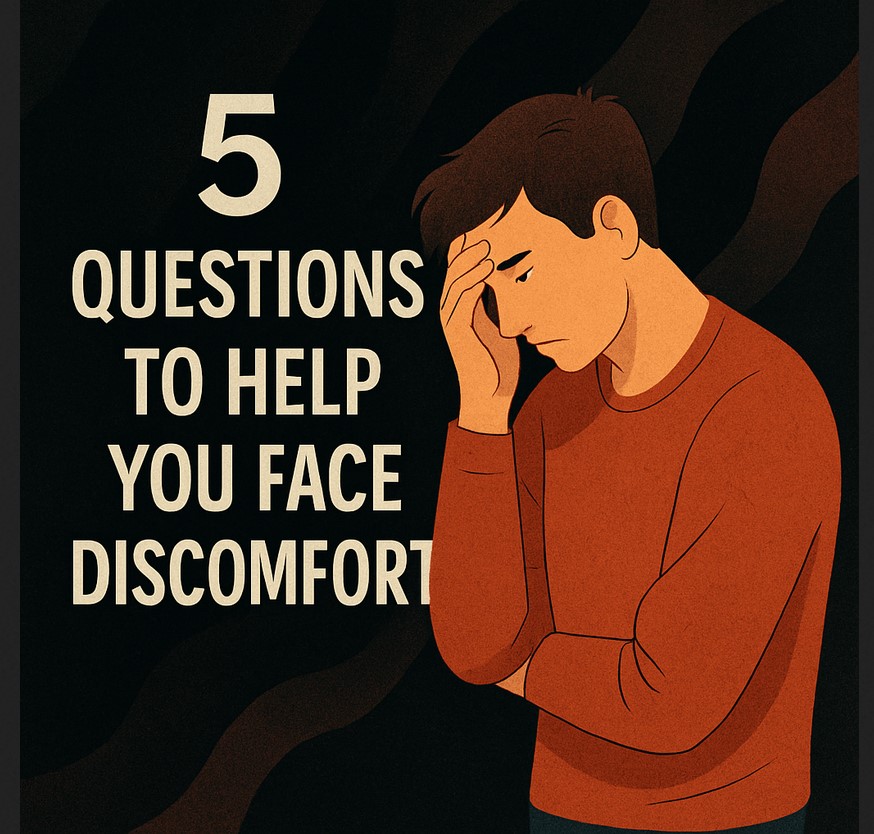
These 5 questions are based on the zen practice of mindfulness and stoic philosophy and they are as follows:
- What's really happening right now?
- Can I see this obstacle as the way?
- What is my body telling me about this?
- What Is my deepest belief about this situation?
- Can I Just Live With This?
We are going to look at each of these questions from a practical perspective.
Firstly we will look at the situation and context addressed by the question, then we list a few key anchor points to provide a foundation and framework.
Then, if relevant, we will look at a brief outline of how and why your natural instinctual response happens in the way that it does. This is important because if you know how and why your brain works the way it does it becomes easier to work with it as you train it in new skills.
The review of each question will conclude with practical action steps and links to further resources on Zen Tools and recommended third party sources. [For new readers, and to be very clear, there is absolutely nothing on sale here!]
As you may know if you are familiar with my material, I have no interest in idle philosophical speculations or in shooting the breeze. I do not write to entertain readers as they sip their mid-morning coffee.
My sole purpose in this article [and all other articles on Zen-Tools] is to offer practical resources based on my own direct experiences.
This article is for the one in a thousand readers who will actually put this into practice, transform their capacity for dealing with setbacks and live a calm, centred and peaceful life.
[This is not what you think about what is happening!
The first question to consider when dealing with setbacks is to get you to see clearly the difference between your view
of what is happening - the story you are telling yourself - and the actual facts of the situation. Your view
of what is happening is distorted by what you’re adding to the situation, through the stories you are weaving around it. Dropping your story is essential to becoming aware of what
is actually happening in the present moment. It is also essential because it releases you from so much of the distress and discomfort that you inflict upon yourself with these stories. You need to see the
storyline for what it is and stop rehashing it over and over with your
believed thoughts, since all it does is sustain and solidify your painful
experience and especially your self-justifications and
attributions of blame. This first question - What's really happening right now? - is the start point to breaking the poisonous loop of your stories. But to do this, we have to be able to see the story and in order to do that we need to: Anchor points
When dealing with setbacks always remember:
How It Happens
The stories we tell ourselves when we are dealing with setbacks are emotionally driven and very largely reactive to events
and situations. They are a form of self talk.
In simple terms, how and and why you create the negative and limiting
stories that you tell yourself is the the function of two different
parts of your
brain. The Interpreter The "how" is to do with the software in your head. The human brain has evolved a wide range of modules which filter,
interpret and explain and interpret what's going on in the world around
us and their primary purpose is to help us survive.
The stories are largely the result of one of these modules that neuroscientist Dr. Michael Gazzaniga describes as "The Interpreter" as it seeks explanations and explains causality in what is happening in the events that we see and experience, and then it provides us with an end-to-end narrative of what has happened and why. Your Primal Brain The "why" is provided by a hardware component - that is the same hardware as your Paleolithic ancestors had, you can think of this as your primal brain, and 98% of your thinking comes from this part of your brain and it is unconscious, automatic and impulsive. So when these two elements work together, the software part of your brain [your interpreter] must deal with what it’s
given by the hardware [your amygdala] and here's the rub, it can be tricked and
manipulated, Gazzaniga calls this “hijacking”. This
means that the interpreter - the story telling mechanism - in your brain gets hijacked in many ways. The takeaway from all this is that: Practical Action Steps Creating A Gap
When you are dealing with setbacks and you feel overwhelmed by the storm of your discomfort, one of the most effective means for coping
is to just stop and take several conscious breaths
and allow
space into your troubled mind.
Then, if you feel able, take this next step. [Don't worry if this seems too much as I will go into this in more depth in Question 5 below.] Take a few minutes throughout the day and repeat this simple practice and unhook yourself from your monkey mind, with all it's worrying and obsessing.
When you are washing the dishes, or putting out the trash, or driving your car, just create a gap in your thoughts. Take several
conscious breaths. Just pause. Pema Chodron describes this as being like popping a bubble: The key to dealing with setbacks is practice.
[1] What's Really Happening Right Now?
In summary:
Rewriting The Story
In their unfiltered state most of the stories that we tell ourselves will be negative and these will be ego based and thus by definition self-serving. These are the stories that will undermine you.
The bad news is that your brain is wired to give more weight and attention to negative experiences and emotions and it registers negative stimuli more easily than positive events.
The good news is that you can change negative biases that show up in the stories you tell yourself.
It requires conscious effort and repetition, but it can be done if you work at it. So, rewrite the story you are telling yourself.
The technical reason why this is possible is neuroplasticity - the ability of your brain to reorganize itself, create new pathways, and dismantle habits and behaviours that are no longer serving you.
The truth of the stories we tell ourselves is subjective, it is whatever we want it to be.
- What matters is the energy - the dominant underlying emotion - behind the story.
- It is that energy that will be stored in our mind.
- It is that energy that will form the lens through which we interpret the events of that story and all future similar events.
- The stories that we tell ourselves are a matter of choice.
- You can consciously rewrite the story that you tell yourself.
- A story framed with a positive energy of inspiration, creativity and power transcends the limited, self-serving voices of your egoic self. Here is a personal example.
- One of the keys to dealing with setbacks is to understand and use the power of framing in the way you rewrite your stories.
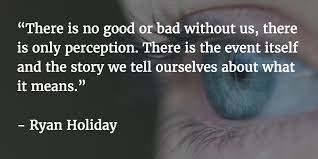
When you are dealing with setbacks this second question is intended to help you realise that you are facing a binary choice: Reality is what is true. The truth is whatever is in front of you right now. For example, whether you like it or not, it’s raining now. “It shouldn’t be raining” is just a thought. In reality, there is no such thing as a “should” or a “shouldn’t”. These are only judgements - thoughts - that we project onto reality. Anchor Points A Framework For Action Our framework for the appropriate action to take in the face of obstacles and dealing with set backs is drawn from 2 key ideas from Stoic philosophy: These two stoic themes are co-related, the first is a declaration of choice - the choice to manage your response to events, and the second establishes your point of focus - facing the adversity and transmuting it into an advantage. The Dichotomy Of Control
The Stoic idea of the "dichotomy of control" contrasts two very different approaches to control.
Modern psychologists position this as (a) an “internal locus of control” and (b) an “external locus of control.” If you have an internal locus of control you will most likely believe that you are
responsible for most of what happens in your life. You focus on what you could do better or what you can influence in pursuing your goals.
The consequence of this is that your response to events determines the outcomes you experience in your life. I refer to this as the law of response and outcome and this is one of the guiding principles of the material and resources on this site. In contrast, if you have an external locus of control you
believe that external factors, such as luck, fate, or other people, are
primarily responsible for the outcomes of events in your life, rather
than your own actions and efforts. So you will tend to blame others
for your problems, find excuses to not pursue your goals, and
generally live a frustrated and unfulfilled life. Evidence show that if you have an internal
locus of control there is greater likelihood of you being happier, less anxious, able to make better
decisions and accomplish more of your goals. So in summary: The outcomes that you experience are determined by your responses to the events in your life. This can be expressed as: Outcome = Event x Response
You always have a choice.
The strength and quality of your response is determined by the skills and the experience you bring to it. The stronger your response - the better the outcome
Turning Adversity Into Advantage This idea is attributed to Marcus
Aurelius and as he put it nearly 2000 years ago: “The impediment to action
advances action. What stands in the way becomes the way.” Marcus
argued that obstacles in life are not roadblocks but opportunities for
growth and success, and that by reframing challenges as chances to
improve,
exercising discipline in action, and cultivating a strong will,
individuals can transform adversity into triumph. It is invitable that you will find yourself dealing with setbacks, hold ups, road blocks and seemingly insurmountable obstacles.
That is the nature of life. It is designed to sort out the truly
committed from the waverers. The attrition factor is what wears so
many people down and causes them to "throw in the towel". Be prepared
for this and accept it. Here is my list of some of the fundamentals
that form the basis of
what is involved in consciously selecting what you choose to focus on.
2. Can I See This Obstacle As The Way?
One final observation, based on many years of past experience:

This question can also be supported by the supplementary question: "What is my felt sense of this moment?" The importance of this question is that it can’t be answered by the thinking mind.
The measure of how you are dealing with setbacks
comes from entering directly into the immediate, physical experience of
the present moment. There is a very powerful connection between your body and your mind.
Your mind is the repository of all of your pre-programmed reactions and response patterns.
Your
body is the vehicle through which your emotional reactions arise and are expressed.
Right now: What is your body telling you about your response to the obstacles you are facing? Anchor Points A Framework For Action
When we go through tough times and are dealing with setbacks we generate a lot of emotion and the "body and mind" effect of this can be quite overwhelming.
I know from my own personal experience that learning how to anticipate
and manage my own responses to difficult situations is hard work.
In the article "This Too Shall Pass"
I have shared an anecdote about how I learned to deal with a
particularly stressful business on a large project I was involved with a number of years ago.
These were the key lessons I learned:
The late great Zen Master Thich Nhat Hanh summarised this beautifully:
"A feeling or an emotion arises, persists, and then disappears.
Mindfulness enables us to be calm throughout the appearance and
disappearance of feelings.
To acknowledge feelings with an even mind is the very best way; while we
are acknowledging them in mindfulness, slowly, slowly we come to a deep
realisation of their nature.
It is that insight which will enable us to be free and at ease as we face each feeling." [The Blooming of a Lotus] Practical Actions Steps
Checking In On Your Body's Reaction To Your Mind
3. What Is My Body Telling Me About This?
This question is very closely related to the previous question about what your body is telling you about this situation. Why do your beliefs matter? Because deeply associated
with each belief is an emotional or energy state and emotional energy is
the language of your inner thoughts. For example, someone's deeply believed beliefs of personal insecurity may
not be evident to them - until the poisonous footprint of these beliefs shows itself in the person's anger, blame, depression, and shame. These hidden beliefs act like
radar, and cause the person to seek out experiences that confirm these beliefs
as true. So, if you buy into the view that over time, what you focus your mind on becomes your reality, then it is important that you understand what your true point of focus is. Here's how you can tell your true point of focus: Anchor Points How It Happens
The
root cause of focusing on what you don't want is previous bad experiences
and in some instances trauma. So when you find yourself dealing with setbacks and obstacles your inner dialogue runs along the lines of: "Here we go again, same old s**t as last time, I really can't be bothered with this...". Or, if the present day situation triggers a past unresolved trauma, then the inner dialogue is: ""There's danger out there, and I have to avoid it." There are a number of models that attempt to offer an explanation as how these negative and resistant beliefs are created and, more importantly, how to deal with them - specifically models such as CBT, ACT, CFT, DBT, Schema
Therapy etc that are particularly effective when applied by clinical
psychologists and other specialists in a therapeutic setting. I have found the "Immunity To Change" model helpful.
I
know that it may not represent the
most current leading edge thinking on this subject, but in my view, this is a simple
powerful tool for understanding and resolving why we so often find it so
hard to achieve our goals for personal change.
In the context of dealing with setbacks and obstacles this model proposes that your resistance isn’t the result of a lack
of will-power, it’s your "emotional immune system" trying to protect
you and keep you safe.
This model defines immunity to change as a prior "hidden commitment", with
an underlying root cause, that competes and conflicts with a stated
commitment to change. It proposes that it is these hidden commitments that cause people to not change and to fail to realise their best intentions.
Put simply, it is these hidden commitments that cause us to not keep New
Year resolutions, to fail with diets, to not stop smoking etc. Practical Action Steps Immunity to Change Resources A Simple Process For Challenging And Changing A Belief You may have been brought up with a belief that has been presented to you as an immutable certainty, and this belief is at the root of your resistance. Regard your beliefs as there to serve a purpose and to be released when that purpose is served.
Mindfulness The practice of mindfulness will help you stop
focusing unconsciously and automatically, and empower you to
intentionally shift your point of focus onto what you do want.
4. What Is My Deepest Belief About This Situation?
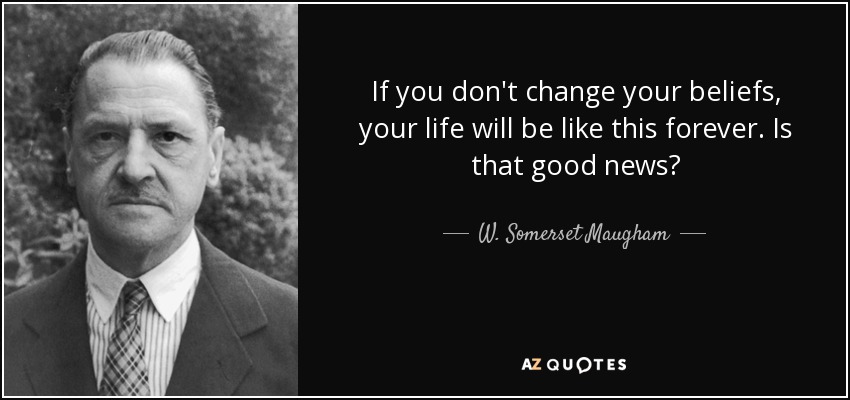
This question is challenging because your natural impulse is to seek comfort
and to fix or remove or suppress the unwelcome and unpleasant feeling that arises when you are dealing with setbacks. The fundamental reason why you feel so bad and why you can't resolve or remove these feelings is because you identify with your emotions.
There
is a simple yet extremely powerful mindfulness practise that will
release you from the powerful hold of these negative emotions and free you to respond in life in a more flexible way.
There is one word in amongst the other one million words on
this Zen-Tools website that does have the power to change you and to transform your
life - if you choose to act upon it Anchor Points Why You Identify So Strongly With Your Feelings Zen teaching offers us a simple explanation with the two minds model: Mark Manson explains this very well in an article called The Two Minds and he outlines very lucidly how we make the mistake of identifying with our thinking mind by saying "I am angry" rather than saying "I feel anger".
5. Can I Just Live With This?
Practical Actions Steps
This is a simple yet extremely powerful mindfulness practise that will release you from the powerful hold of these negative emotions and free you to respond in life in a more flexible way. It is called the practice of deep acceptance.
Just sit quietly for a moment, take a deep breath and observe the feelings and emotions and thoughts that are associated with your fears.
Follow these brief and simple steps and your negative feelings will disappear, and you will feel calm, centred and ready to do what you need to do.
Do not be deceived by the simplicity of these steps, they are very powerful. They work.
If you feel any kind of
resistance to doing this - just do it anyway and see what happens.
Dealing With Setbacks Key Point Summary: [1] What's really happening right now? [2] Can I see this obstacle as the way? [3] What is my body telling me about this? [4] What Is my deepest belief about this situation? [5] Can I Just Live With This?
Recommended Reading Drop The Story - How To Deal With Your Demons and Transform Your Life Who Is In Charge Of Your Brain - How Not To Be Stupid Framing - Change Your Language To Change How You Feel Law Of Response And Outcome - A New Approach To A New Life This Too Shall Pass - The Blessing And The Curse Of Impermanence Immunity To Change - This Is Why Personal Change Is So Difficult Freeing Yourself From Your Mind - 6 Key Practices From Eckhart Tolle Belief - A Terrible Tyrant Or An Empowering Servant The Transforming Power Of Acceptance - I Accept What I Am Feeling Now Return from: "Dealing With Setbacks" to: Walking The Talk Next Article: Why Praxis Is The Key To Living A Successful And Stress Free Life
LATEST ARTICLES
The Battle For Your Mind - How To Win Inner Freedom In A Digital Age Of Distraction
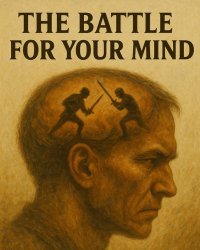 From External Events to Inner Events. We often think of “events” as things that happen out there: the traffic jam, the rude comment, the delayed email reply. But what truly shapes our experience is wh…
From External Events to Inner Events. We often think of “events” as things that happen out there: the traffic jam, the rude comment, the delayed email reply. But what truly shapes our experience is wh…How to See Your Thoughts Without Becoming the Story
 A Practical Guide to Thought-Awareness. You can spend your life inside the stories of your mind without ever learning how to see your thoughts clearly and objectively. Most of the stuff we tell oursel…
A Practical Guide to Thought-Awareness. You can spend your life inside the stories of your mind without ever learning how to see your thoughts clearly and objectively. Most of the stuff we tell oursel…The Collison Decision Matrix - A Simple Framework for Better Choices
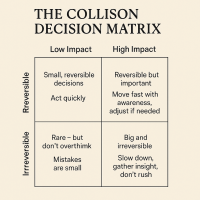 The Collison Decision Matrix Is A Practical Everyday Thinking Tool. Most of us spend a surprising amount of time worrying about decisions. From small ones such as what to wear, what to eat, what to te…
The Collison Decision Matrix Is A Practical Everyday Thinking Tool. Most of us spend a surprising amount of time worrying about decisions. From small ones such as what to wear, what to eat, what to te…The Power Of Asking The Right Question
 The Power Of Asking The Right Question Lies In The Quest For Insight. To experience the power of asking the right question you must develop the practice of asking questions. The best way to improve th…
The Power Of Asking The Right Question Lies In The Quest For Insight. To experience the power of asking the right question you must develop the practice of asking questions. The best way to improve th…Site Pathways
 Here is a site pathway to help new readers of Zen-Tools navigate the material on this site. Each pathway is based around one of the many key themes covered on this site and contain a 150 word introduc…
Here is a site pathway to help new readers of Zen-Tools navigate the material on this site. Each pathway is based around one of the many key themes covered on this site and contain a 150 word introduc…How To Live With Contradiction - Beyond Thought Let Stillness Speak
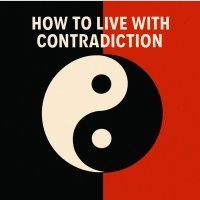 A major impact on so many peoples' lives is the situational contradiction of unfilled realistic expectations. So where does all this leave us? Well here we are, with mental equipment that is more lim…
A major impact on so many peoples' lives is the situational contradiction of unfilled realistic expectations. So where does all this leave us? Well here we are, with mental equipment that is more lim…How To Trust The Process Of Mindfulness - Right Now
 In mindfulness, the process isn’t some distant goal — it's what is happening right now. When we talk about how to trust the process of mindfulness the credibility of the process is heavily dependent…
In mindfulness, the process isn’t some distant goal — it's what is happening right now. When we talk about how to trust the process of mindfulness the credibility of the process is heavily dependent…Inner Mastery For Outer Impact - Mental Clarity For Effective Action
 Insights only matter if they translate into consistent action. In a world crowded with quick fixes and motivational soundbites, the theme “Inner Mastery for Outer Impact” calls us to something more e…
Insights only matter if they translate into consistent action. In a world crowded with quick fixes and motivational soundbites, the theme “Inner Mastery for Outer Impact” calls us to something more e…The Wise Advocate - Helping You Achieve The Very Best Outcome
 The focus of your attention in critical moments of choice either builds or restricts your capacity for achieving the best outcome. When we talk of 'The Wise Advocate' its easy to think of the consigl…
The focus of your attention in critical moments of choice either builds or restricts your capacity for achieving the best outcome. When we talk of 'The Wise Advocate' its easy to think of the consigl…Trust The Process - Beyond The Cliche
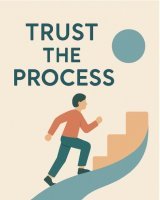 The phrase "trust the process" has become a cliche, the woo-woo mantra of the "self help" industry. Those three little words feel like they ought to mean something useful but hidden behind them are a…
The phrase "trust the process" has become a cliche, the woo-woo mantra of the "self help" industry. Those three little words feel like they ought to mean something useful but hidden behind them are a…The Dopamine Delusion - Why Anticipation Beats Achievement
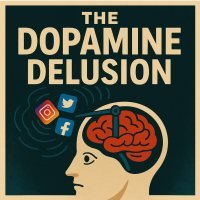 The thrill we feel is not in the having, but in the wanting. The more we have, the more we want. The more things we acquire and the easier things get for us, the more discontent we feel. The more spo…
The thrill we feel is not in the having, but in the wanting. The more we have, the more we want. The more things we acquire and the easier things get for us, the more discontent we feel. The more spo…The Power Of Silence Is Experienced In Your Use Of Language
 Practise the "Beneficial Neurological Delay" for optimal comprehension. The power of silence is experienced in your use of language, specifically: - How you formulate the words you use to think and in…
Practise the "Beneficial Neurological Delay" for optimal comprehension. The power of silence is experienced in your use of language, specifically: - How you formulate the words you use to think and in…

